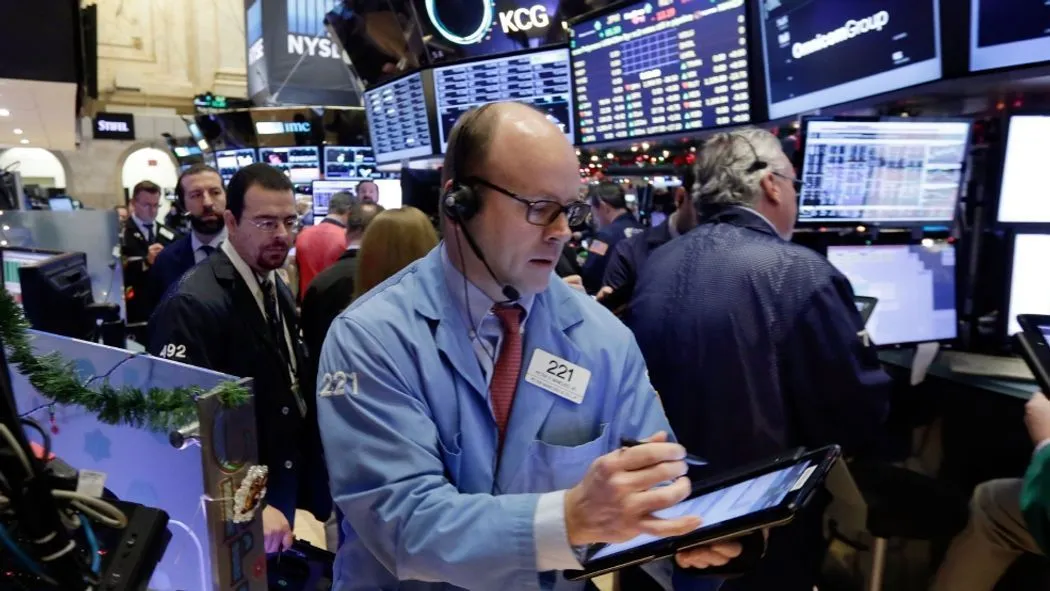Wall Street is bracing for a high-stakes week that could define the direction of markets and the U.S. economy for the rest of the year. The Federal Reserve’s upcoming meeting on Wednesday stands at the forefront, with investors keenly awaiting signals about future monetary policy. While no immediate rate cuts are expected, traders will scrutinize the Fed’s comments for hints about the path ahead.
Adding to the tension, four of the largest technology companies—Amazon.com Inc., Apple Inc., Meta Platforms Inc., and Microsoft Corp.—are set to release earnings, while critical economic indicators, including gross domestic product (GDP) and nonfarm payrolls, will also be unveiled.
“This week’s packed calendar — trade negotiations, the Federal Open Market Committee (FOMC) decision, the jobs report, and earnings from four of the Magnificent Seven tech giants — makes it a true moment of truth for markets,” said Julian Emanuel, chief equity and quantitative strategist at Evercore ISI.
The abundance of major events will test whether investors still believe in the resilience of both the U.S. economy and the stock market’s record-breaking rally. At the same time, President Donald Trump’s self-imposed tariff deadline of August 1 looms. While Trump has stated the deadline won’t be extended, market participants remain unsure if this will bring stability to trade talks after months of uncertainty.
Kevin Gordon, senior investment strategist for Charles Schwab & Co., believes that clarity may emerge around economic resilience but sees less certainty on trade. “Deadlines for reciprocal tariffs are staggered for some of our biggest partners, and unresolved deal frameworks keep the outlook uncertain,” he said. “August 1 isn’t going to magically end tariff anxiety.”
Corporate earnings have so far provided a bright spot. According to Bloomberg Intelligence, S&P 500 company profits are up 4.5% from a year ago, with many firms surpassing expectations. Airlines like Southwest Airlines Co. expect tariffs—which have shaved $1 billion from its annual pre-tax profit this year—to have a reduced impact in the second half. “We already see signs that demand is coming back in volumes,” said CEO Bob Jordan.
This earnings strength has been driven largely by wealthier consumers. American Airlines Group Inc. reported strong premium cabin demand, and Deckers Outdoor Corp. highlighted robust sales of its high-end footwear brands like Ugg and Hoka. United Airlines Holdings Inc. and Delta Air Lines Inc. also noted that corporate travel is fueling their recovery.
However, not all companies are faring well. Chipotle Mexican Grill Inc. cut its outlook due to strained lower-income consumers reducing their spending. Other firms, such as Conagra Brands Inc. and Abbott Laboratories, are feeling the pinch of higher costs linked to tariffs. Bloomberg Intelligence strategists Gina Martin Adams and Michael Casper warn that consumer discretionary stocks could face profit declines heading into early 2026 as trade policies increasingly weigh on margins.
Dan Greenhaus, chief economist and market strategist at Solus Alternative Asset Management, emphasized that the full effect of tariffs will take time to understand. “We already have corporate commentary on tariff impacts at an individual level, but it may take several more months to fully gauge how costs are distributed,” he said.
Economic data remains uneven as tariffs begin to ripple through the economy. The government’s preliminary second-quarter GDP estimate is expected to show a rebound in growth after a sharp rise in imports contributed to an earlier contraction. “It won’t be until after the market and economy digest the new tariff rates going into effect on Friday that we’ll truly know where we stand,” said Michael O’Rourke, chief market strategist at JonesTrading LLC.
Other upcoming reports could signal economic softening. Economists forecast sluggish consumer spending in June after adjusting for inflation, slower hiring, and a slight rise in unemployment. Inflation, measured by the Fed’s preferred personal consumption expenditures (PCE) index, is also expected to accelerate as tariffs push up costs. “This isn’t the cliff that many expect when anticipating a downturn, but it’s a noticeable slowdown if you look beneath the surface,” said Gregory Daco, chief economist at EY-Parthenon.
Despite these challenges, the stock market remains at record highs. Worst-case tariff scenarios have yet to materialize, helping sustain investor optimism. Cayla Seder, macro multi-asset strategist at State Street, points to several factors supporting the rally: “The labor market is holding up, wages are outpacing inflation, which supports consumer spending overall. Additionally, earnings have been beating a low bar, signaling that companies are performing better than feared.”
As the week unfolds, investors will be looking for signs of continued economic strength, potential tariff relief, and positive earnings surprises. The combined weight of these events could determine whether markets maintain their upward trajectory or face renewed volatility in the second half of 2025.

Subscribe to our newsletter!
As a leading independent research provider, TradeAlgo keeps you connected from anywhere.








